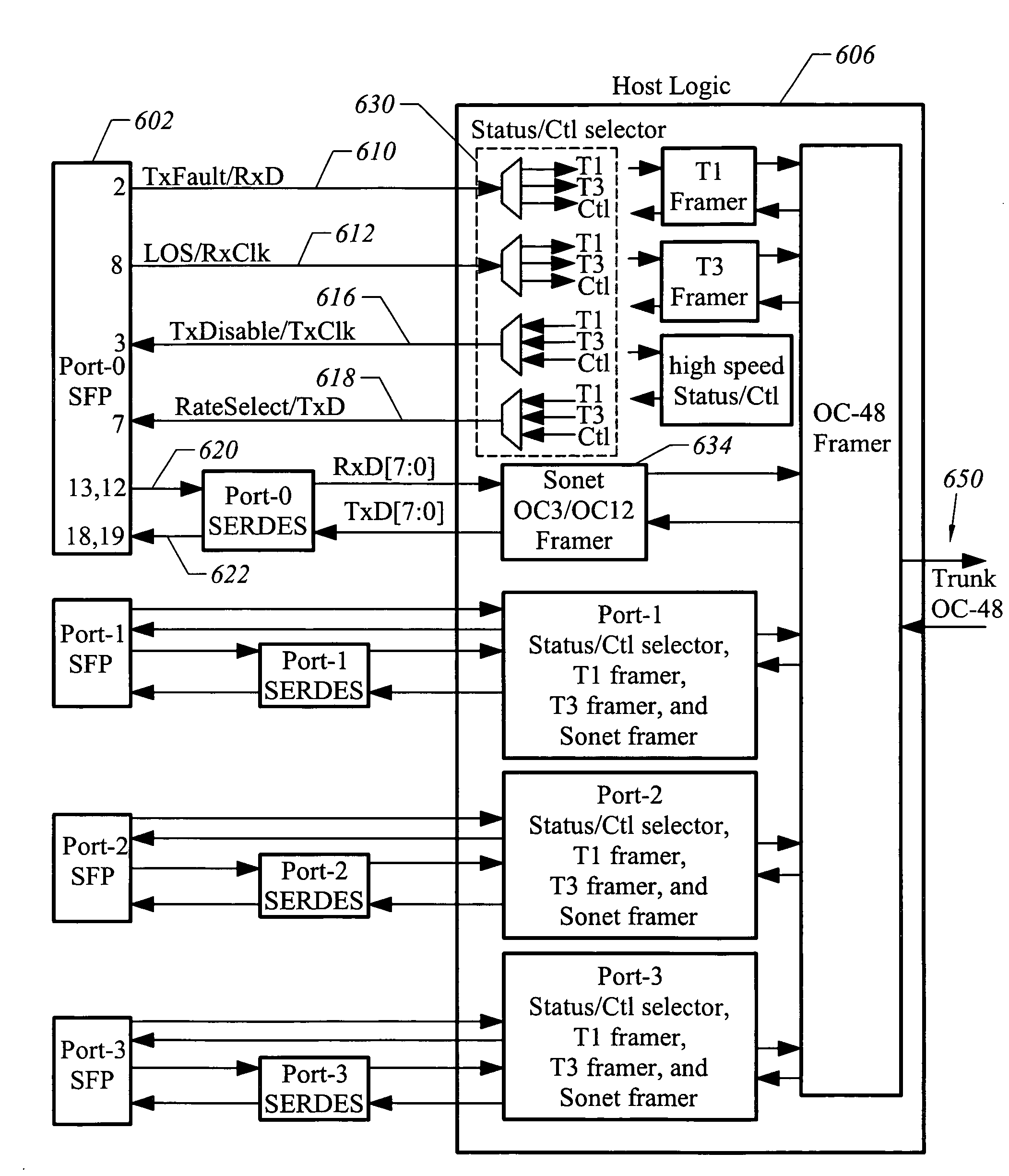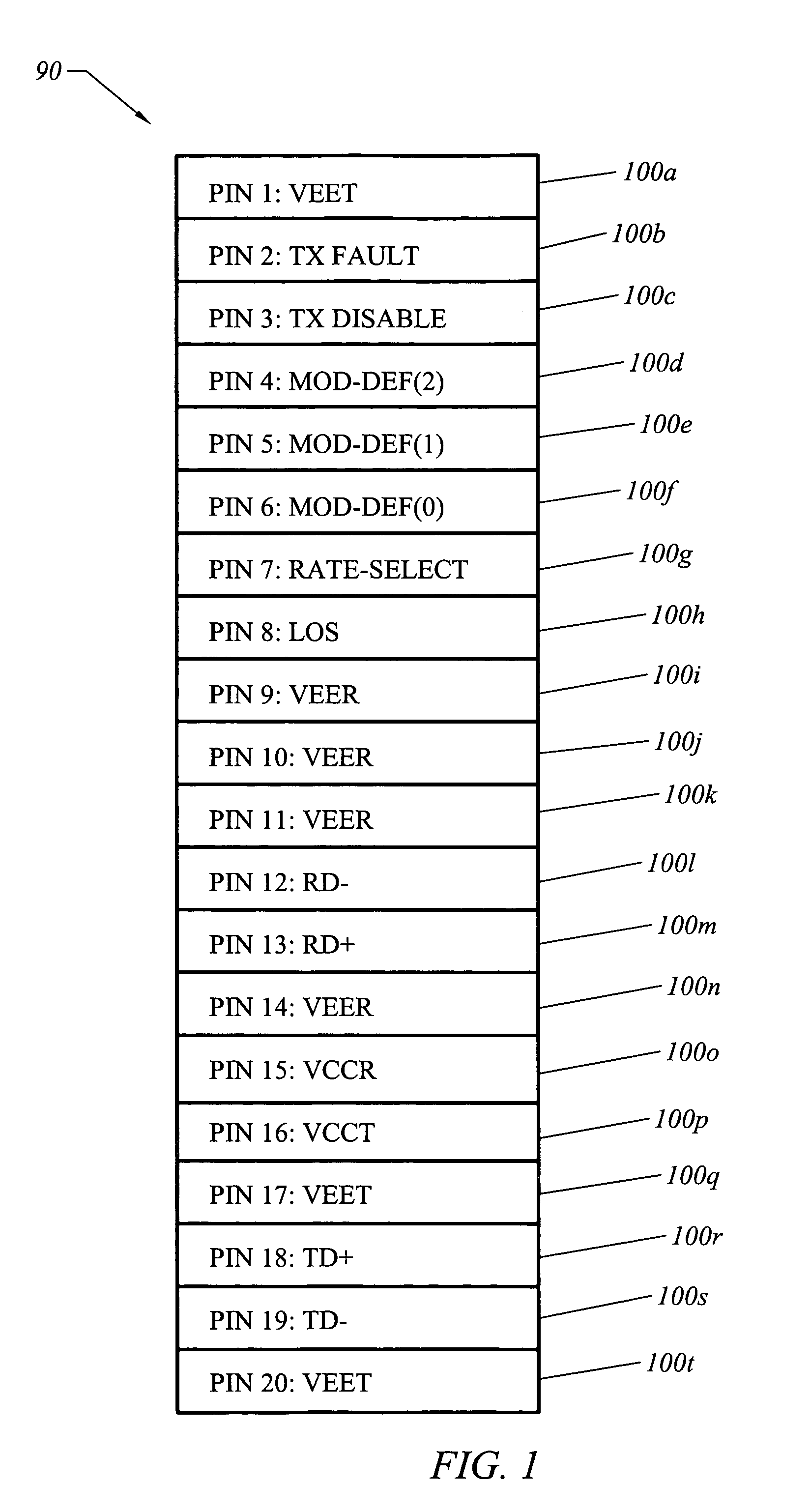Low speed data path for SFP-MSA interface
a low-speed data and interface technology, applied in multiplex communication, optical elements, instruments, etc., can solve the problems of high-speed trunk bandwidth sharing, and incompatibility of t1 and t3 telecom interface signals with sfp-msa data paths, so as to enhance the usefulness of the device and high data rate telecom applications. , the effect of low data rate telecom applications
- Summary
- Abstract
- Description
- Claims
- Application Information
AI Technical Summary
Benefits of technology
Problems solved by technology
Method used
Image
Examples
Embodiment Construction
[0032]Users of modules in compliance with the Small Form Factor Pluggable Transceiver Multisource Agreement (SFP-MSA) may wish to use some low speed modules as well as high speed modules. That is, the ability to use the modules for relatively low speed interfaces, as for example T1 / E1 or T3 / E3 interfaces, in addition to modules for relatively high speed interfaces, e.g., gigahertz frequencies, may be desired. By way of example, it may be desirable to use one or more SFP-MSA compliant modules capable of being used to transmit and to receive up to 2.5 Gigabits of data and one or more low speed modules to send and receive PBX data at lower speeds along with Gigabit Ethernet signals into a single trunk circuit. While logic may be added to a module to convert separate clock and data signals created by a line interface unit (LIU) into single combined differential pair signals as used in SFP-MSA compliant modules, such logic often proves to be difficult and impractical to implement within ...
PUM
 Login to View More
Login to View More Abstract
Description
Claims
Application Information
 Login to View More
Login to View More - R&D
- Intellectual Property
- Life Sciences
- Materials
- Tech Scout
- Unparalleled Data Quality
- Higher Quality Content
- 60% Fewer Hallucinations
Browse by: Latest US Patents, China's latest patents, Technical Efficacy Thesaurus, Application Domain, Technology Topic, Popular Technical Reports.
© 2025 PatSnap. All rights reserved.Legal|Privacy policy|Modern Slavery Act Transparency Statement|Sitemap|About US| Contact US: help@patsnap.com



